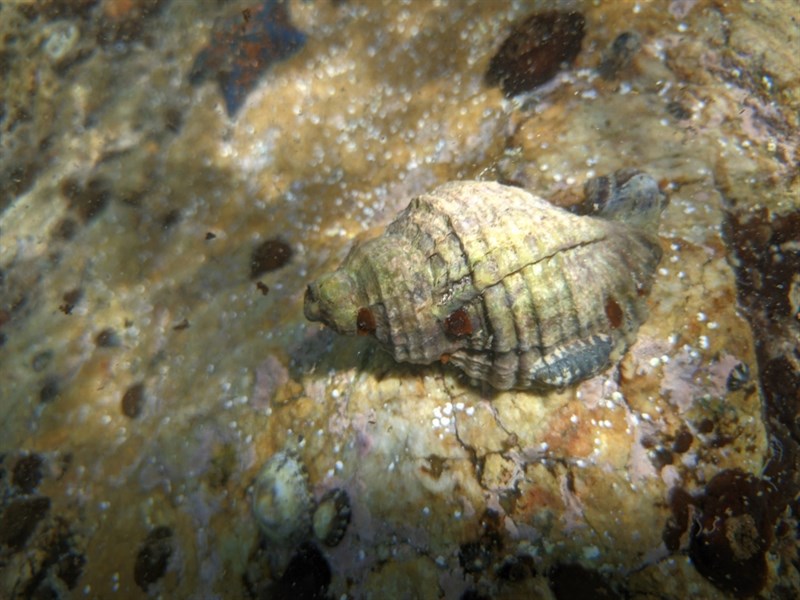Nucella heyseana is a species of predatory sea snail, a marine gastropod mollusk in the family Muricidae, the murex snails and rock snails. This species is found in the intertidal and subtidal zones of the Pacific coast of North America, ranging from Alaska to California.
Description & Characteristics
Nucella heyseana, like other members of the genus Nucella, has a distinctive conical shell with a pointed apex. The shell of Nucella heyseana typically grows to a maximum size of approximately 4 cm in length. The shell coloration is highly variable, ranging from white to brown to reddish-brown, often with darker markings or bands. Nucella heyseana has a thick, fleshy foot that it uses for locomotion and to anchor itself to rocks. Its radula, a ribbon-like structure used for scraping food, is adapted for preying on other marine invertebrates.
Habitat and Occurrence
Nucella heyseana is a common intertidal and subtidal species along the Pacific coast of North America. It is typically found in rocky intertidal zones, clinging to rocks and kelp. This species is highly tolerant of both cold temperatures and wave action. Nucella heyseana can be found in a range of marine zones, from the low intertidal zone to the shallow subtidal zone, with a depth range extending to approximately 30 meters. This species prefers habitats with a high abundance of its prey, primarily barnacles and mussels.
Taxonomy
Nucella heyseana belongs to the Class: Gastropoda, Order: Neogastropoda, and Family: Muricidae. This family is characterized by its predatory nature, with many species possessing sharp, pointed shells and specialized radulae for scraping food. The genus Nucella, to which Nucella heyseana belongs, is a diverse group of marine snails known for their heavy, thick shells and their propensity for preying on other invertebrates.
Feeding
Nucella heyseana is a carnivorous predator, primarily feeding on barnacles and mussels. Its strong radula allows it to scrape and pry open the shells of its prey. These snails are known to have a voracious appetite and can have a significant impact on the populations of their prey.

Image References